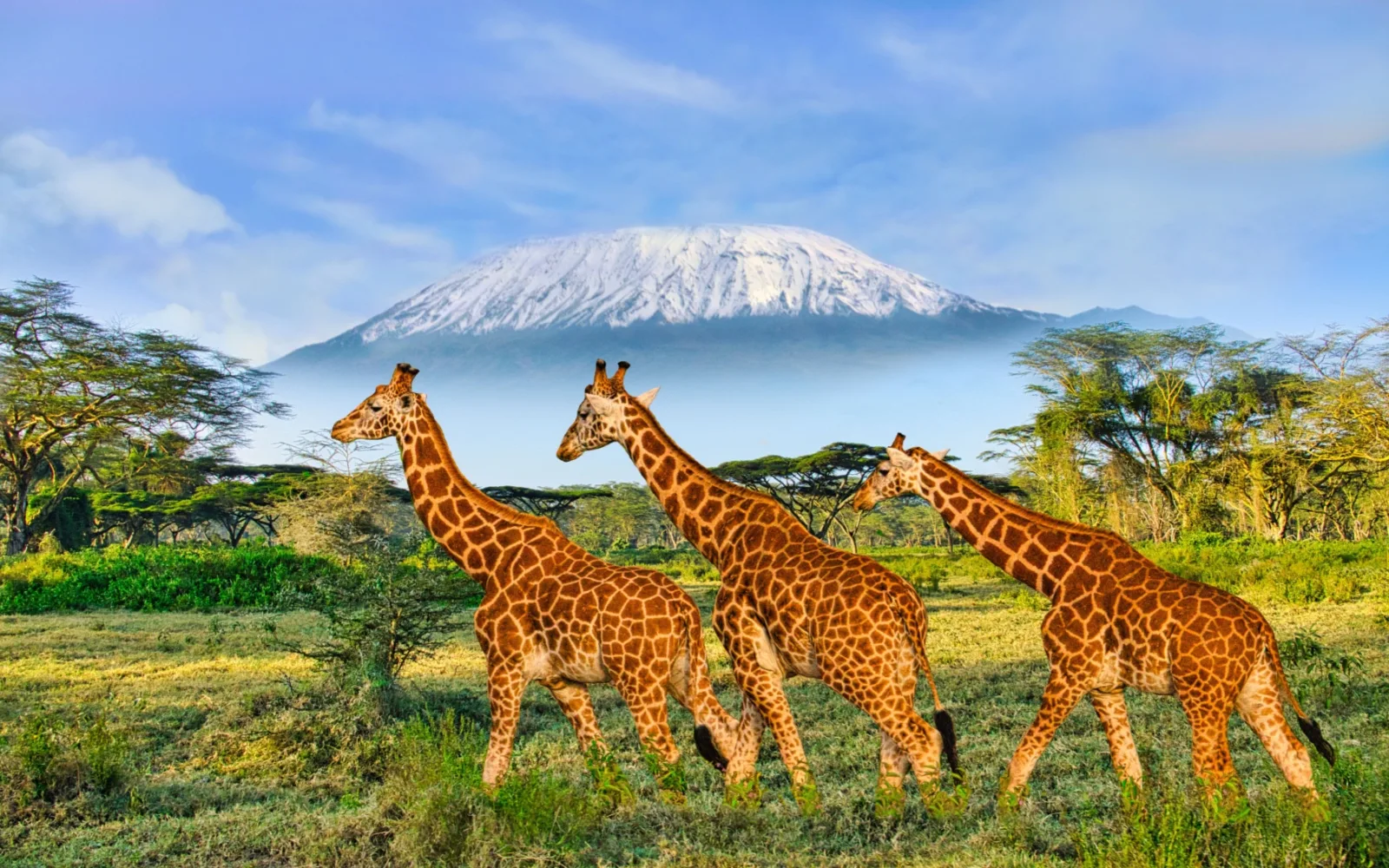What's the best time to visit Kenya?
June to September is the best time to visit Kenya. It’s the mild dry season with highs in the 70s and low 80s. Vegetation in famous parks like Maasai Mara and Amboseli dries up to make wildlife viewing on safari easier, the annual Great Wildebeest Migration happens, and cultural events like the International Camel Derby and Festival take place.
Kenya has it all: Bustling cities where markets, cafes, and museums abound, vast nature reserves and national parks teeming with wildlife roaming the African plains and savannah, and beaches on the Indian Ocean that are perfect for relaxing in the sun.
But if you visit at the wrong time of the year, you might arrive during the heavy masika rains, when crowds reach their peak, or when prices skyrocket as demand increases. That’s why it’s important to find out the best time to visit Kenya.
Kenya enjoys a tropical climate with its equatorial location, but even though warm weather is a given here year-round, it doesn’t mean there aren’t periods that are intensely rainy or stormy.
Below, we’ll show you everything you need to know about the different seasons in Kenya and the best months to visit. You’ll see average costs, what to expect in terms of crowds and weather, cultural events that take place each month, and ideas for things to do during each season.
A clear idea of the best time to visit Kenya — overall, when it’s cheapest, when it’s least crowded, and when it’s best avoided — will help you pick out travel dates that will work perfectly with your trip goals. Let’s take a look!
Overall Best Time to Visit Kenya
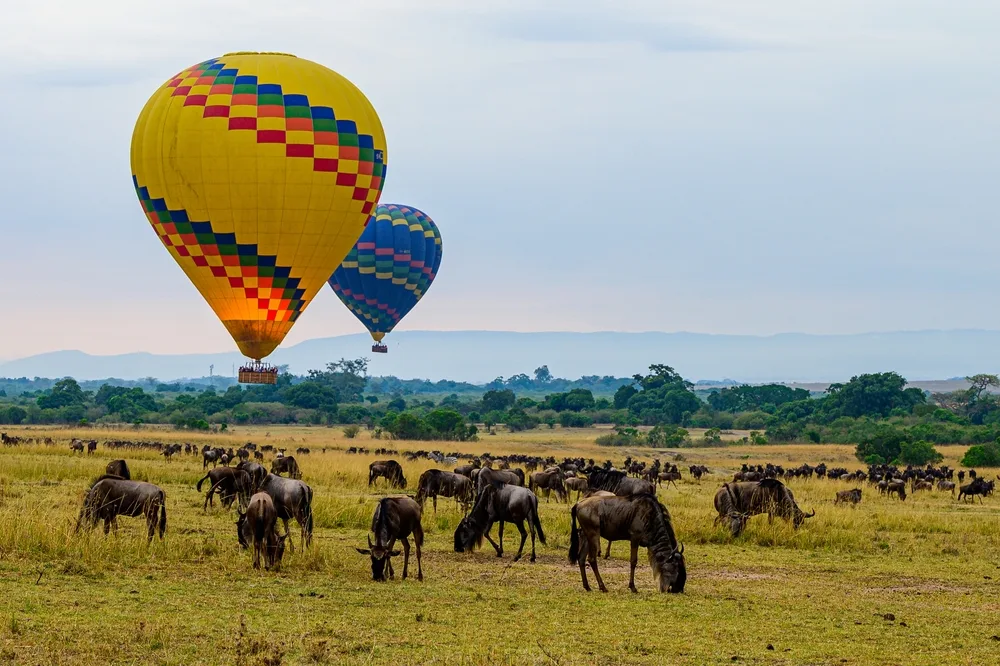
Matrishva Vyas/Shutterstock
The best time to visit Kenya overall is between June and September. It’s the dry safari season in Kenya with mild temperatures and excellent conditions for wildlife viewing, beaches, and exploring cities like Nairobi.
The weather in Kenya is at its best during these months: Mild, warm, and dry. After the heavy rains dry up in mid-June, wildlife in Kenya’s national parks and reserves are on the move to seek out water and are much easier to spot.
- June: 70-83°F; 2-7 rainy days
- July: 70-83°F; 1-4 rainy days
- August: 72-84°F; 1-5 rainy days
- September: 75-85°F; 2-6 rainy days
The masika rainy season, the heavier of the two rainy seasons Kenya experiences each year, wraps up around mid-June and leaves the African plains and savannah dry and comfortable. With highs in the 70s and low 80s, you couldn’t ask for better conditions in Kenya.
This, being the dry season, is the best time of year to go on safari in the Maasai Mara National Reserve. Vegetation dries up and makes wildlife viewing easier and more productive on safari trips and drives through the reserve.
This is your chance to see the Big Five in their natural habitat: rhinos, elephants, lions, leopards, and buffalo. But other animals, like cheetahs, zebras, hippos, and crocodiles, are also fixtures in the reserve.
Maasai Mara borders the famous Serengeti National Park, located just to the south across the Tanzanian border. Between July and September, you’ll be able to witness the awe-inspiring Great Wildebeest Migration (and migrating zebras) through Serengeti to Maasai Mara.
The wildebeest herds have to cross the treacherous Mara River into Kenya, where massive Nile crocodiles wait with jaws open to snap up the slower, younger, or injured wildebeest. Millions of these animals cross the river in waves between July-August. It’s an amazing thing to witness!
The dry season is also perfect for enjoying the beaches in Kenya, like Mombasa Beach, Diani Beach, Gale Beach, and Watamu Beach. You’ll find temperatures pleasant with very little rain to derail your relaxation and water sport plans!
Interestingly, you’ll find some of the most expensive and cheapest months of the year during this peak period. We’ve compiled Google Hotels and Skyscanner airfare data to show you how much you might pay to visit during the best months of the year:
- June: $73/night; flights from $861
- July: $81/night; flights from $1,157
- August: $75/night; flights from $947
- September: $78/night; flights from $752
September is one of the cheapest months to visit Kenya, while July is the most expensive month of the year for a trip. June and August are both moderately priced. Just be careful in your planning if you want to stick to a budget.
This time of year, Kenya is alive with cultural festivals and events that can take your trip to the next level. Check out some of the following, depending on the month you visit:
- Nairobi Mega Festival (Jun) is a big reggae music festival held at Afro Sayari in Nairobi for 2 days with multiple live performances, dancing, food, and drinks
- Nairobi Restaurant Week (Aug) is when Nairobi restaurants and cafes offer special deals on 3-course meals and bite-sized treats to encourage tourists and locals to try new dining spots
- International Camel Derby and Festival (Aug) in northern Kenya’s Maralal is a big camel racing event with amateur and professional riders joining in and activities, music, and more
- Africa Concours D’Elegance (Sept) at the Nairobi Racecourse is a classic car competition for restored automobiles and motorbikes featuring food, music, and drinks
With the best conditions to experience a safari, beach, or sightseeing, shopping, and dining in Kenya, June through September is the best time to visit the country overall.
Cheapest Time to Visit Kenya
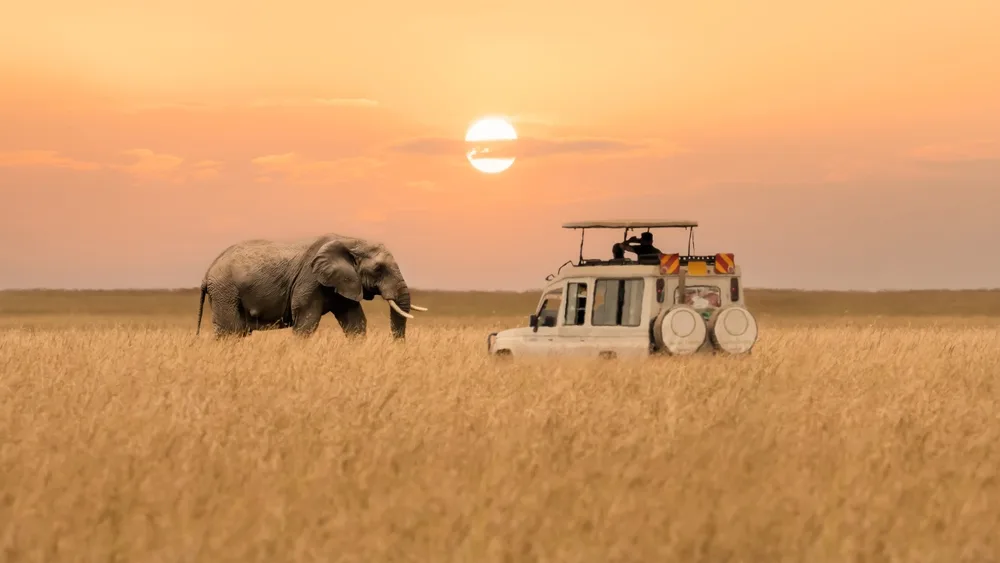
Mongkolchon Akesin/Shutterstock
September through November is the cheapest time to visit Kenya. You get a taste of the dry season and the start of the milder, second rainy season during these months. You can save hundreds by visiting between September and November.
The weather shifts dramatically during this period, so plan your dates carefully. September to mid-October is dry and excellent for safaris and wildlife viewing. These are also good months to visit the coast for beaches like Diani or Watamu.
- September: 75-85°F; 2-6 rainy days
- October: 76-85°F; 6-9 rainy days
- November: 75-86°F; 10-12 rainy days
But once mid-October arrives, so do the milder vuli rains — the second rainy season Kenya experiences during the year. It’s not as bad as April-May, but the rains push wildlife further away and make vegetation dense (so it’s harder to see wildlife).
Nairobi tends to be drier during the rainy seasons in Kenya, so it’s a good spot to visit if you’re coming during the cheapest or least busy times of the year.
You can spend time in Nairobi’s many cafes, museums, parks, and markets. It’s easy to reach the Nairobi National Park from the city center if you want to see birds and wildlife.
This is an excellent time to spot migratory birds making their way across Kenya, providing unique displays of color and interesting calls. You can see dozens of songbird species around the Angama Mara Airfield, like spotted flycatchers and Northern wheatears.
Out in the mangrove channels of Malindi-Watamu UNESCO Biosphere Reserve, especially around Mida Creek, you might spot African blue quail, Whimbrels, Curlew Sandpipers, Grey Plovers, Little Stints, and Greater and Lesser Sand Plovers between September and May.
Amboseli National Park, the “Home of the African Elephant” in the shadow of Mt. Kilimanjaro, can be great to visit this time of year if you’re interested in birding, safaris, or hiking. You’ll see zebras, giraffes, elephants, and hundreds of bird species.
Views of Mt. Kilimanjaro are clearer during the mid-October-November rainy season without the haze, but wildlife is more abundant in September and late October.
But the real charm of visiting Kenya between September and November is how affordable it is. The vuli rainy season keeps many tourists away and prices on hotels and flights drop. Here’s what we found in Google Hotels and Skyscanner airfare data:
- September: $78/night; flights from $752
- October: $82/night; flights from $723
- November: $87/night; flights from $714
October is the cheapest month to visit Kenya overall when you consider hotel averages and airfare. But September and November aren’t far off and all three months are ideal if you’re looking for a travel deal.
You could pay as little as $1,300 for a 7-day trip to Kenya (hotel + airfare) in October. Talk about a steal, especially compared to peak season months like July (when prices reach their annual peak).
Along with the Africa Concours D’Elegance (Nairobi Racecourse) in September, you can look forward to the following events during the vuli rainy season:
- Mombasa Carnival (Nov) features parades, food and craft vendors, costumes, dancers, and live music to coastal Mombasa in one of the biggest events of the year
- Lamu Cultural Festival (Nov) means it’s time for traditions in the UNESCO Old Town of Lamu with henna art, crafts, food, music, dance performances, and demonstrations along with donkey races
- Lake Turkana Festival (Nov) in Marsabit showcases the diverse traditions and cultures of northern Kenya with 14 tribal groups represented in dress, food, song, and dance
If budget is high on your list of travel priorities, try to plan your trip between September and November. September through mid-October are the best times to come when prices are affordable due to drier conditions and better wildlife viewing.
Least Busy Time to Visit Kenya
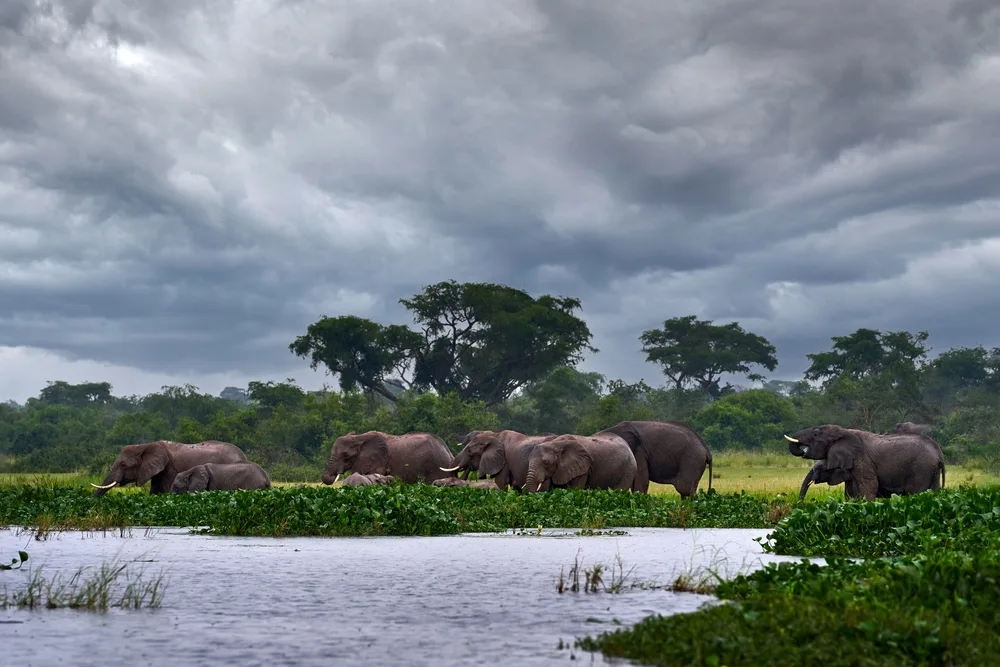
Ondrej Prosicky/Shutterstock
April through June is the least busy time to visit Kenya. April and May mark the heavy masika rainy season and the wettest months of the year, while June sees the start of the dry safari season.
Tourism closely follows the safari season in Kenya, so when conditions aren’t good for wildlife viewing, visitor numbers dwindle. That’s why April, May, and June see fewer tourists in Kenya.
The weather starts off rainy and extremely wet in April (the wettest month of the year) and May, which mark the start of the heavy masika rainy season. The rains dissipate by mid-June, welcoming the balmy dry season.
- April: 75-87°F; 13-17 rainy days
- May: 72-85°F; 9-15 rainy days
- June: 70-83°F; 2-7 rainy days
While it’s nice to enjoy smaller crowds in Kenya, the parts of the country that are most popular for tourists don’t feel supremely crowded even during the peak season (but Nairobi may see a little less traffic and slightly less-congested streets).
You should note that some safari lodges and camps shut down during April and May due to the heavy rains, limiting your options if you’re set on going on safari during your trip.
It’s not a surprise because wildlife viewing just isn’t great during the rainy season. Animals tend to migrate and move around to other parts of Africa during the rains.
The dense vegetation that sprouts up with the rainfall also acts as cover for the animals and makes them harder to see. That means your chances of spotting the Big Five are greatly diminished between April and May, though your odds improve dramatically come mid-June.
Starting in mid-June, wildlife viewing is once again on the menu and Kenya’s beaches become a great spot to spend your time. Check out the Watamu Marine Park and nearby Sudi Island if you’d like to relax on sandy shores, see a palace, mosque, and markets.
While this isn’t the cheapest time to visit Kenya, it’s still affordable and sees moderate prices on flights and hotels. Here’s what we found in Google Hotels and Skyscanner data for each month:
- April: $82/night; flights from $858
- May: $86/night; flights from $997
- June: $73/night; flights from $861
You could pay as little as $1,370 for a 7-day trip to Kenya during June, which is the cheapest month during the least busy period. That’s great news because June offers much better weather and safari conditions than rainy April and May!
In addition to the Nairobi Mega Festival in June, you can check out events like these if you visit during the least crowded season:
- Easter Events (Mar/Apr) include street processions in villages, towns, and cities with bonfires in church lots and communal feasts
- Nairobi International Jazz Festival (May) features back-to-back jazz concerts with performances by musicians, bands, and other genres along with food and vendor booths
Overall, if you really want to avoid crowds, you should focus your visit on June for better weather, wildlife viewing opportunities, and beach conditions in Kenya.
Worst Time to Visit Kenya
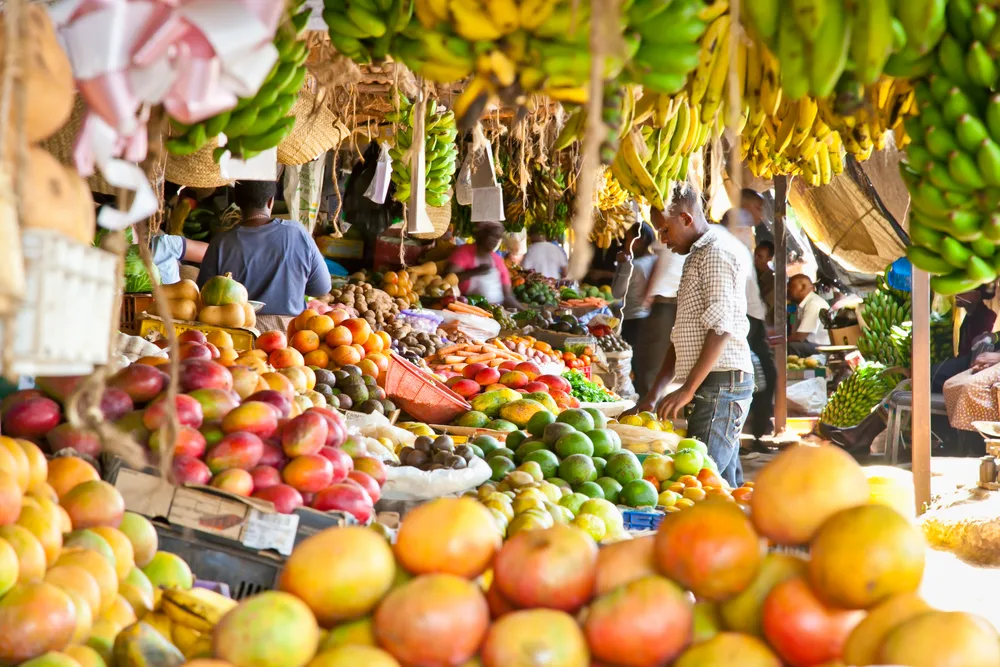
Nairobi, Kenya market with fruit and vegetables stacked, Feb. ’14/Aleksandar TodorovicShutterstock
The worst time to visit Kenya is during April, May, and November through mid-December. These are the wettest months of the year with poor wildlife viewing conditions and hot temperatures that make outdoor activities less comfortable.
April and May are hopelessly rainy and wet, leading to muddy roads in parks and reserves that can make getting around very difficult. November through mid-December is also wet and offers poor wildlife viewing conditions.
- April: 75-87°F; 13-17 rainy days
- May: 72-85°F; 9-15 rainy days
- November: 75-86°F; 10-12 rainy days
- December: 76-87°F; 7-9 rainy days
You’re looking at the wettest months of the year here with up to 17 rainy days each month if you visit during April, May, November, or the first half of December. It’s far from ideal for most of the popular tourism activities in Kenya.
You might run into safari lodges and camps that close down during April and May, or venture all the way here and fail to see some of the animals you’re most excited about during any of these months.
Why? The lush greenery that pops up with all the rainfall makes it hard to spot the animals commonly seen on safari. Aside from migratory birds, which are here in abundance during November and December, you may not see much wildlife at all.
On the plus side, you’ll run into smaller crowds during all of these months and you’ll be able to find some great deals on hotels and flights during November, which is one of the cheapest months to visit Kenya.
- April: $82/night; flights from $858
- May: $86/night; flights from $997
- November: $87/night; flights from $714
- December: $88/night; flights from $848
We’ve already looked at some of the events that take place in April, May, and November, from the Nairobi International Jazz Festival to the Mombasa Carnival, but here are some events that take place in December:
- Jamhuri Day (Dec 12) is a national holiday in Kenya that celebrates the formation of the republic with parades, live entertainment, fireworks, and dancing in towns across the country
- New Year’s Eve Celebrations (Dec 31) bring live music, food booths, fireworks, beach parties, and countdowns with the biggest events in Nairobi
You’re much better off waiting until at least January-March to visit, or hanging on until June-September if you want a truly spectacular experience in Kenya with safaris, beaches, and city exploration during the dry season.
Kenya by Month: What to Expect
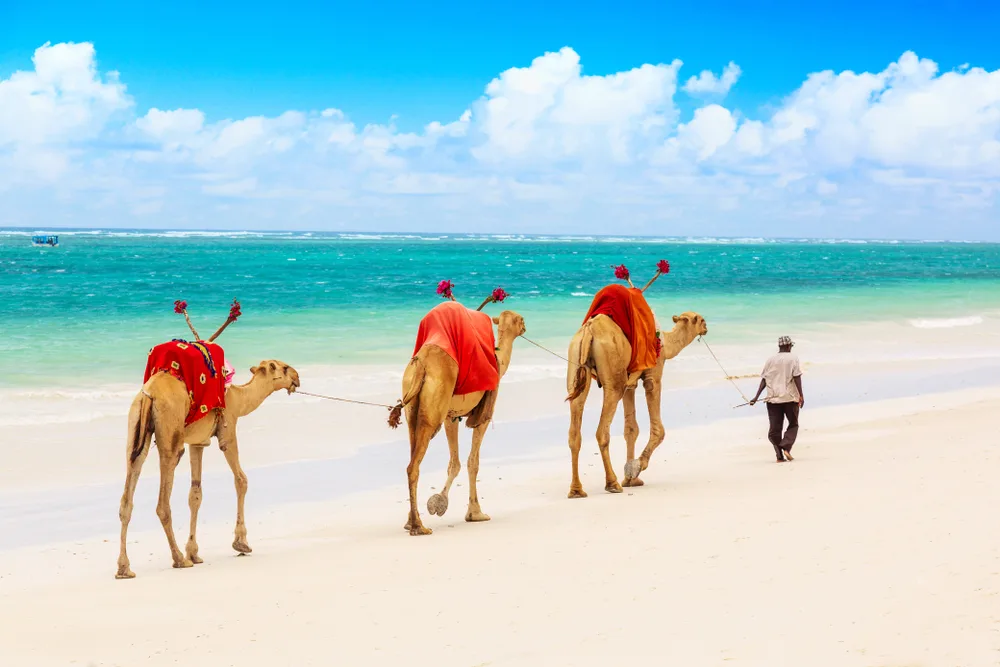
Nick N A/Shutterstock
Conditions across Kenya change subtly or dramatically month-to-month, making it essential to know what to expect once you’ve settled on your travel dates. Here’s what Kenya looks like by the month.
January
January is one of the dry season months in Kenya, offering 3-7 days of rain and highs around the upper 70s and upper 80s. It’s hot, but not humid and a nice month to visit if you’re going on safari or want to spend time at Watamu Marine Park. Hotels average just $89/night with flights starting at $760.
February
Another dry month, February sees just 2-7 rainy days and highs between 79-88°F. It’s a good time for hanging out at Diani Beach or exploring the mangrove channels. You can attend the WRC Kenya Safari Rally this month. Hotels cost about $89/night and flights start at $798 round trip.
March
March wraps up the first dry season of the year, then the masika heavy rainy season begins mid-month with 8-11 rainy days on the calendar. The East African Arts Festival and Easter events (when Easter falls in March) take place this month. Hotels average $91/night and flights start at $779 round trip.
April
One of the least busy months to visit due to the masika rainy season and closures of some safari camps and lodges, April is one of the worst months to visit Kenya. Highs in the mid-70s to upper 80s and 13-17 rainy days (wettest month of the year) make it harder to enjoy. You’ll pay about $82/night for hotels and upwards of $858 for a round trip flight.
May
May continues the heavy masika rainy season with 9-15 rainy days and is one of the least busy months in Kenya. Though it’s quiet and wet, you’ll still find the Nairobi International Jazz Festival happening this month and high prices on flights ($997+). Hotels are moderately priced around $86/night this month.
June
June is one of the best months to visit Kenya as well as one of the least busy. It wraps up the masika rains and welcomes the dry safari season mid-month with highs between 70-83°F and 2-7 rainy days. The Nairobi Mega Festival (reggae music) happens this month, and hotels average just $73/night with flights starting at $861.
July
One of the best months to visit Kenya for a safari, July is warm (highs between 70-83°F) and dry (1-4 rainy days) with excellent wildlife viewing opportunities in Amboseli, Maasai Mara, and Nairobi National Park. This is a great month for beaches like Galu and Nyali. Hotels are around $81/night with flights from $1,160 (most expensive month).
August
August is another of the best months to visit Kenya as part of the dry safari season with chances to see the famous Great Wildebeest Migration and zebra migrations through Maasai Mara National Reserve. Nairobi Restaurant Week and the Maralal Camel Derby are big events this month, when hotels charge about $75/night and flights start at $947.
September
One of the best and cheapest months to visit Kenya, September is still the dry safari season with awesome wildlife viewing. Watch wildebeest and zebra cross the Mara River this month and check out the Africa Concours D’Elegance at the Nairobi Racecourse. You’ll pay around $78/night for hotels and upwards of $752 for round trip flights.
October
Cheap and dry for the first half, October welcomes the milder vuli rainy season mid-month with 6-9 rainy days and highs between 76-85°F. It’s the cheapest month to visit Kenya overall with hotels averaging just $82/night and flights from $723, so you can score great deals this month.
November
November is one of the cheapest, yet worst months to visit Kenya. It’s when the vuli rainy season really gets going with 10-12 rainy days and highs between 75-86°F. But events like the Mombasa Carnival, Lamu Cultural Festival, and Lake Turkana Festival can be fun. You’ll pay about $87/night for hotels and $714+ for round trip flights.
December
Early December is one of the worst times to visit Kenya with the vuli rainy season, but the dry season begins mid-month with great wildlife viewing. Events like NYE celebrations in Nairobi and Jamhuri Day parades happen this month. You’ll pay about $88/night for hotels and flights start around $848 this month.
Frequently Asked Questions
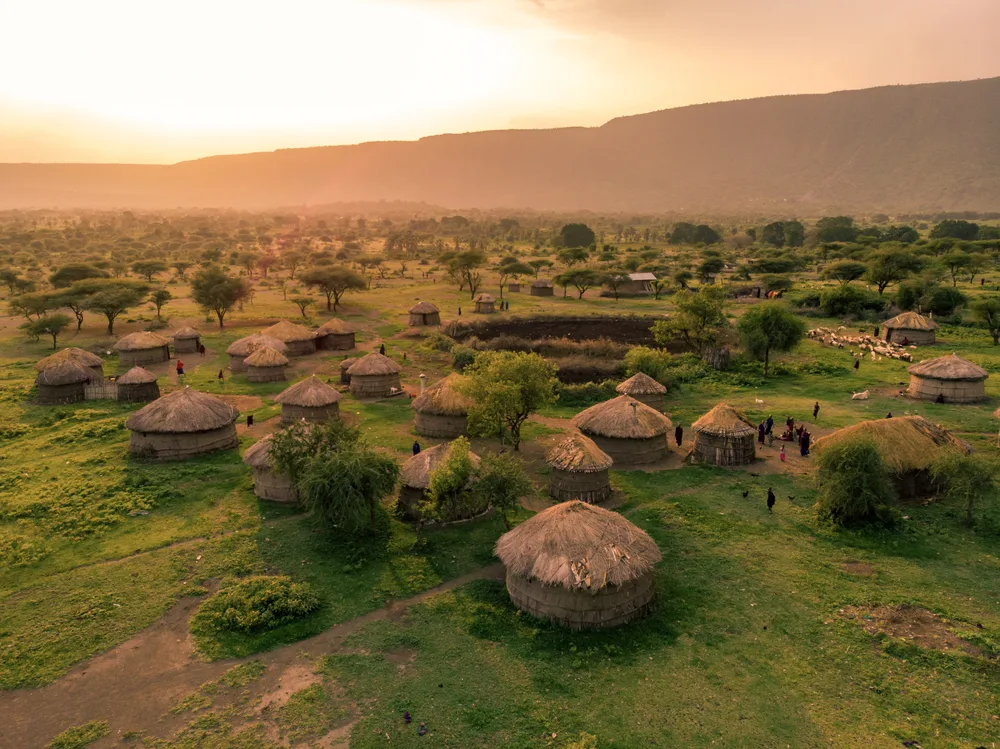
Gideon Ikigai/Shutterstock
Not sure about which month will work for your trip? Take a look at the most frequently asked questions below to learn more about the best time to visit Kenya.
What is the best month to go to Kenya?
September is the best month to go to Kenya. It has excellent weather, some of the lowest prices on hotels and flights, and small crowds. It’s also part of the dry safari season when wildlife is most active and easily spotted in parks and reserves like Maasai Mara and Amboseli. The Great Wildebeest Migration can be seen in Kenya this month.
What is the best time of year to go on safari in Kenya?
The best time of year to go on safari in Kenya is from mid-June to early October. These months are the mild dry season when vegetation doesn’t interfere with wildlife viewing, animals are actively congregating around water sources, and mass migration events happen among the wildebeest and zebra populations in Kenya.
What is the rainy season in Kenya?
Kenya has two rainy seasons: the heavy masika rains from April to May and the lighter vuli rains from mid-October to mid-December. April and May represent the main rainy season with up to 17 rainy days on average across the country that lead some safari camps and lodges to close down during this time.
Which month is hot in Kenya?
The hot months in Kenya are January through March, with March seeing the highest average daily temperatures of the year. You can expect highs to range from 78-89°F during these three months of the year, when Kenya experiences its first dry season.
Is Kenya expensive to visit?
Kenya is not expensive to visit, but its capital city, Nairobi, can be expensive if you’re hoping to stay in top-notch accommodations. Usually, the most expensive part of visiting Kenya is the airfare. We found round trip airfare to Kenya priced as low as $723 in October, but the same ticket can surpass $1,100 in July.
What’s the Best Time to Visit Kenya Overall?
The best time to visit Kenya overall is from June to September — you won’t find a better time for safaris, beaches, and enjoying attractions, eateries, and markets in cities like Nairobi. These months are dry, mild, and warm without being hot.
September through November is the cheapest time to visit Kenya, while April through June see the smallest crowds (and lots of rain until mid-June).
Try to avoid April, May, November, and mid-December, which are the wettest months of the year and not great for wildlife viewing or coastal areas like Mombasa or Watamu Marine Park.
With the chance to spot lions, giraffes, and elephants as they roam across the African plains or settle into the noisy, buzzing atmosphere of the capital, Nairobi, visiting Kenya is a trip you’ll remember for a lifetime — and it’s even better when you go during the best months of the year.



